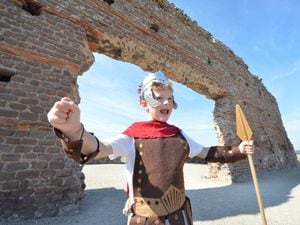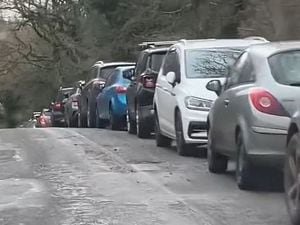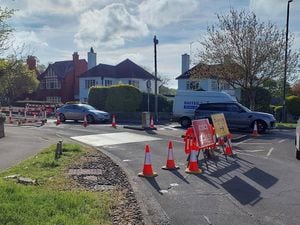'Chariot racing' and Roman army drills as history comes alive at Wroxeter Roman City
History has been brought back to life at one of the county's most spectacular sites.

Hundreds of people visited Wroxeter Roman City over the weekend for two days of packed activities from English Heritage.
The site, which was the fourth largest in the Roman province of Britannia, was taken over with displays, 'chariot racing', and Roman army drills.
The event comes ahead of a fresh study of the historically significant site – due to start at the end of the month.
Becky Eade, from English Heritage, said they had been thrilled with the way the event had gone.
She said: "Saturday was absolutely brilliant, we had more than 400 visitors, and Wroxeter Roman city was certainly brought to life with the Ermine Street Guard performing Military displays and the children’s Roman activity area busy all day with chariot racing and army drills.
"The weather was hot but people were prepared with sun hats, using umbrellas for providing shade drinking water and purchasing ice creams form the ice cream van on site. We have had some great feedback about the event.
"Sunday has gone the same way, and the site is busy and with families and adults looking at the Roman living history encampment, the Roman military equipment on site and the children's activities.
The study due to take place at the end of the month will last for ten days, and is the first extensive survey since the 1990s.
The survey, led by Professor Fritz Lüth, will cover not just the city but also the surrounding land within a two kilometre radius.
In a statement English Heritage said: "We may see more detail of the Roman fortress that underlies the city, and perhaps more of the Iron Age settlements that preceded the Roman occupation.
“The forum, the main basilica, temples, the elite town houses with their courtyards, the dwellings of the less important townspeople, industrial areas and much more will be revealed within the defences of the city.
“And we hope, too, to understand the surrounding two kilometres much better – the distribution of farms and industrial areas – perhaps even a Roman amphitheatre. We hope to share some of the key findings in the spring of 2023 to coincide with launch of our new exhibition and interpretation of the site.”





